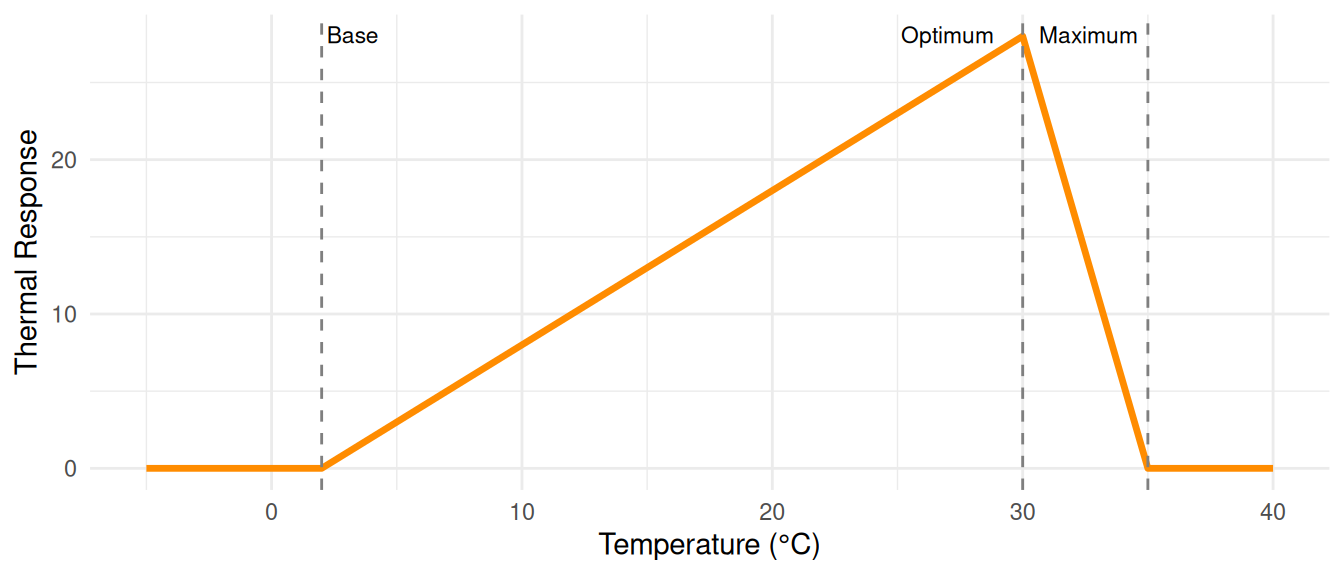
Thermal Time
Daily thermal time for wheat based on SubDailyInterpolation with three cardinal temperature and ThreeHourAirTemperature interpolation method.
Overview
The Thermal Time function in canola model calculates the daily thermal time. This is crucial for crop development and organ growth. The model uses a sub-daily interpolation method to estimate air temperatures at three hourly interpolation method (ThreeHourAirTemperature), then applies a three cardinal temperature function to each interpolated temperature. These values are averaged to give a daily thermal time used in phenological and growth calculations.
InterpolationMethod: ThreeHourAirTemperature is used for sub-daily interpolation, i.e. 3-hourly temperature estimates.Response: Three cardinal temperature using XYPairs to define the temperature response function. This function determines how effective the temperature is for thermal time accumulation (Whish et al. 2020; Robertson and Lilley 2016).
| Cardinal Point | Description | Value (°C) |
|---|---|---|
| Base | Minimum for growth | 2 |
| Optimum | Maximum rate of growth | 30 |
| Maximum | Growth ceases above this | 35 |
Cultivar-Specific Parameters
In general, we do not modify the thermal time function for different cultivars.
Practical Example
No practical example is provided for the thermal time function.
References
Robertson, M. J., and J. M. Lilley. 2016. “Simulation of Growth, Development and Yield of Canola (Brassica Napus) in APSIM.” Crop and Pasture Science. http://dx.doi.org/10.1071/CP15267.
Whish, J. P. M., J. M. Lilley, M. J. Morrison, B. Cocks, and M. Bullock. 2020. “Vernalisation in Australian Spring Canola Explains Variable Flowering Responses.” Field Crops Research 258 (November): 107968. https://doi.org/10.1016/j.fcr.2020.107968.